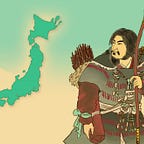The Mongoloid race (East-Eurasians)
Mongoloid people, now often referred as “East-Eurasians”, are native to East Asia, Southeast Asia, Siberia/North Asia, Polynesia, Central Asia and the Native Americans.
People of East Asian, Southeast Asian, Siberian, as well as Central Asian ancestry are closely related to each other genetically. Even American Natives. It is called the Mongoloid race. Aka East-Eurasian or East Asian-related populations as some seem to say.
from jp.wiki
モンゴロイドは、東アジア(北アジア及びチベット高原を含む)・東南アジアを中心に、中央アジア・南北アメリカ大陸・太平洋諸島及びアフリカ近辺のマダガスカル島に分布する。
Mongoloid race is found natively in East Asia, Southeast Asia, Siberia, America, Pacific, and most parts of Central Asia, also Madagascar/Africa.
Genetic studies revealed a close genetic relation between these populations and that they can be clearly distinguished from other populations (e.g. Africans or Europeans or Indians.)
Full genome analyses reveals the distribution of Mongoloid/East-Eurasian populations.
While western scientists have mostly abandoned the usage of race concepts (because of ideological reasons), the concept is used by mostly all non-western scientists. In Japan, it is normal to include notes about racial classification if we read about ethnic groups and their history. It is a normal thing.
In the West, the Out-of-Africa theory is seen as fact, but in reality there is still much uncertainty.
A multiregional origin for modern humans was recently supported by studies from Yuan et al. 2019, Chen et al. 2020, Huang (various studies, most recently also in 2020). They concluded that there are three human races, Eastern-Eurasians (Mongoloids) being one of the three. They also cite and found interesting things about the MGD theory (maximum genetic diversity), neutral and non-neutral DNA and evolution as well as convergent evolution of autosomes and SNPs and “junk-DNA”.
Huang notes that the three groups (Africans, West-Eurasians and East-Eurasians) share probably less than 12% of total genome. He argues that the three groups have had independent origin, but movements and mixed as well as parallel-evolution caused now shared genes.
Interesting, but more evidence is surely needed.
Some graphics:
Kazakh — Central Asia
Khmer — Cambodia
Dayak — Indonesia
Native American — Canada
Kalmyk — Russia
Tibeto-Burmese — India
Malay — Malaysia
Mongol — Mongolia
Malay — Malaysia
Okinawan — Japan
Ulch — Russia/Northeast Asia
Paleolithic ancient Asian
Ural tribal — Russia
Altai tribe — Russia
Northeast India tribe — India
Sakha Yaku — Russia/Siberia
Thai — China (southern)
Uzbek — Uzbekistan
Japanese — Japan
Filipino tribal — Philippines
Turk — Turkmenistan
Dayak — Indonesia
Additionally there is some Mongoloid (East-Eurasian) admixture in other regions too.
